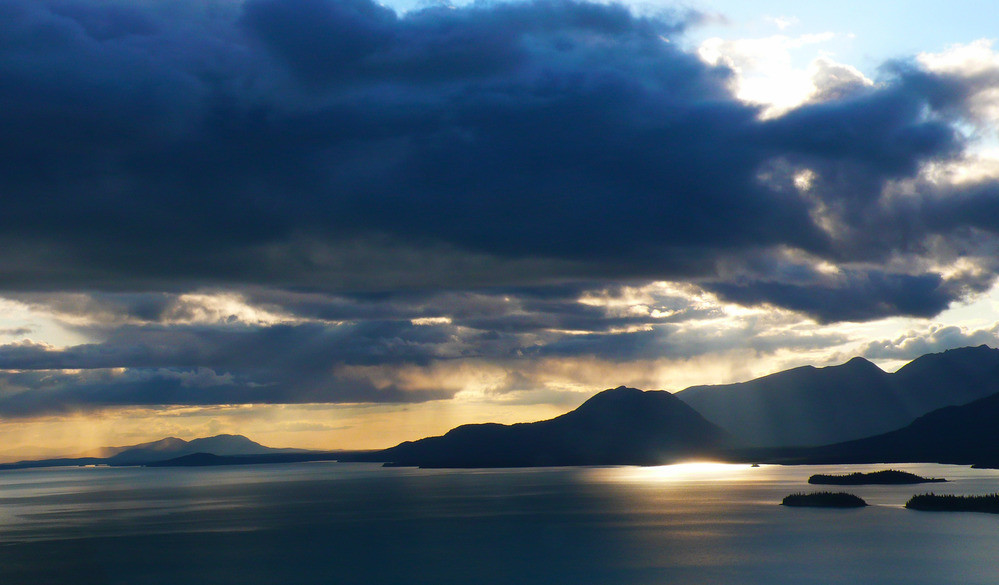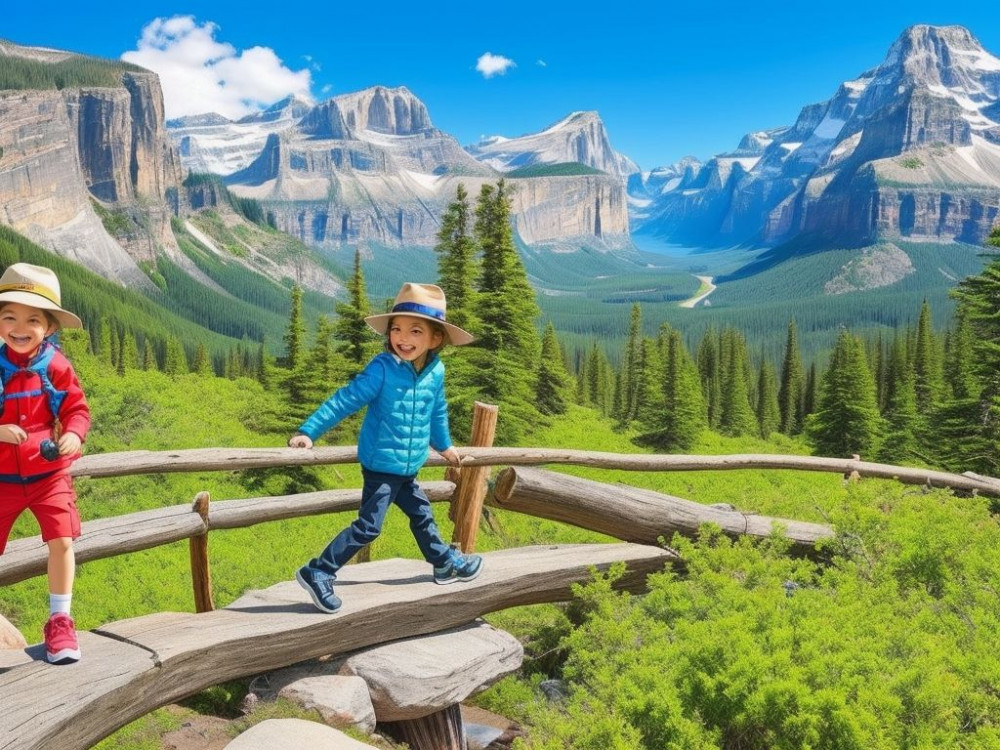Yearning to get out? Check out Lake Clark National Park and Preserve! Volcanoes, glaciers, rivers filled with salmon, plus amazing wildlife.
Leave your troubles behind and bask in the grandeur of this huge park!
Introduction
Experience an idyllic Alaskan getaway at Lake Clark National Park and Preserve.
Here, you will find captivating snow-capped mountains, shimmering crystal-clear lakes, and meandering rivers creating a one-of-a-kind picturesque landscape.
The wildlife here is truly unique; brown bears, moose, wolves, and salmon can all be spotted!

(Photo by NPS / J. Mills)
Whether you’re an avid hiker or just looking to take in the views, you won’t be disappointed.
This remote and pristine park is also rich in cultural history.
As the traditional homeland of the Dena’ina people, the park offers archaeological sites and traditional hunting and fishing practices.
But don’t worry – Lake Clark National Park and Preserve is still accessible! From Anchorage, you can fly or sail in, making access to this hidden gem easier without sacrificing comfort or convenience.
Visit Lake Clark National Park and Preserve for your chance to disconnect from the hustle and bustle of everyday life and reconnect with nature.
Here, you can explore untouched wilderness, spot wildlife in their natural habitats, and learn about the rich cultural heritage of the area.
So why not plan your visit today and create memories that will last a lifetime?
Location and History
Lake Clark National Park and Preserve is an astonishing wilderness located in Southern Alaska. It covers four million acres of untouched land, complete with breath-taking landscapes, wildlife, and history.
Location and History:
The park is at the foot of the Chigmit Mountains, with Lake Clark as the centerpiece. Far from civilization, it’s a chance to truly immerse oneself in nature.
Established in 1980 by The Alaska National Interest Lands Conservation Act, Lake Clark National Park and Preserve safeguards the area’s ecosystems and cultural heritage.
| Location | Southern Alaska |
|---|---|
| Size | Over four million acres |
| Established | 1980 |
| Purpose | Conservation of ecosystems and cultural heritage |
The park boasts mountains, tundra, lakes, rivers, and more. It is also home to animals such as grizzly bears, moose, wolves, and salmon.
There are plenty of activities for visitors to enjoy – hiking, fishing, camping, and wildlife viewing.
It is also special in that it maintains traditional Native Alaskan lifestyles.
It demonstrates the connection between humans and nature, as Indigenous people have lived here for thousands of years.
There is an old story that a mythical creature called “Klqui” once inhabited the park – a giant bear that could shape-shift into other animals.
Such sightings are rare today, but the legend adds an enigmatic vibe to the park.
Lake Clark National Park and Preserve is a haven for nature-lovers and adventurers alike.
With its mesmerizing landscapes, deep history, and captivating legends, it stands as a symbol of the beauty of the natural world.
Who needs a map when you have Lake Clark National Park and Preserve?
It’s nature’s way of saying ‘get lost, but in a good way’.
Geography
Lake Clark National Park and Preserve is a stunning natural beauty located in the south of Alaska. It has a diverse geography, with mountains, glaciers, forests, and lakes.

The park features the Coastal Mountain Range and the Chigmit Mountains. There are also two glaciers; Tana Glacier and Muldrow Glacier.
Plus, visitors can explore the tranquil beauty of Lake Clark and Twin Lakes or take a trip along the Tanalian River.
A daring adventurer once got lost here and encountered unpredictable weather. He had to seek shelter in an abandoned cabin near Lake Clark.
This taught him about preparedness and respect for nature’s forces.
Lake Clark National Park and Preserve is a majestic reminder of nature’s grandeur. It invites people to uncover hidden treasures and create their own stories within its boundaries.
But, don’t forget, its climate is as unpredictable as a Tinder date with commitment issues!
Climate
Lake Clark National Park and Preserve has a unique climate, due to its varied terrain and geographical features. It has long, cold winters and short, mild summers.
This is affected by its spot in southwest Alaska and its closeness to the coastal mountain ranges.
In winter, the temperatures can drop below freezing.
Average lows range from -10°F (-23°C) to 20°F (-6°C). Snowfall is heavy, making for a gorgeous landscape.

Frozen lakes and rivers offer ice fishing and cross-country skiing.
Summer brings milder temperatures.
Average highs are usually around 60°F (15°C), which is great for exploring and enjoying activities such as hiking, camping, and wildlife viewing.
Longer days give extra time to admire the scenery.
To make the most of the trip, visitors should come prepared for the changing climate.
Wearing layers helps to adjust to the temperature variations.
Sunscreen and insect repellent are also recommended preventing sunburns and bug bites.
Having a knowledgeable guide can add more to the experience.
They can show you hidden gems and keep you safe during extreme weather.
By embracing Lake Clark’s diverse climate, visitors can appreciate its beauty in any season.
Whether its snow-covered peaks or the warmth of summer, every moment spent here is unforgettable.
Flora and Fauna
At Lake Clark National Park and Preserve, a plethora of flora and fauna await! Wildflowers, mosses, and lichens thrive among towering spruce trees and delicate alpine flowers.
Bears, moose, wolves, and salmon call this vibrant ecosystem home.
These diverse habitats have been shaped by the park’s unique geographical features, such as mountains, forests, rivers, and lakes.
Each ecosystem provides a unique habitat for different species of plants and animals.
Visitors may even have the chance to spot bears feasting on berries or fishing for salmon.

Moose often graze in meadows or wade through shallow lakes, while wolves roam the vast expanses of wilderness.
Plus, bald eagles soar overhead!
Lake Clark National Park and Preserve has long been a part of the native peoples’ history. For thousands of years, they have relied on the park’s resources to sustain their livelihoods.
Today, the park serves as a reminder of their ancient traditions and connection with nature.
Come experience Alaska’s untamed wilderness at Lake Clark National Park and Preserve!
Hike through dense forests. Observe wildlife from afar. Expect an unforgettable experience amidst nature at its finest.
Ecosystem
Discover the fascinating ecosystem of Lake Clark National Park and Preserve! From its towering mountains to crystal clear lakes, this pristine wilderness is home to a rich array of plants and animals.
Let’s check out the specifics:
| Land: | 2.6 million acres of glaciers, forests, tundra and alpine ecosystems host brown bears, moose, wolves and caribou. |
| Lakes: | Lake Clark is famous for its abundant salmon runs, and other lakes house beavers, otters and fish. |
| Rivers: | Teeming with life, rivers are spawning grounds for anadromous fish like salmon. Plus, they replenish nutrients in the area. |
| Wetlands: | Vital for regulating water flow and purifying water sources, wetlands provide homes for birds like ducks, geese, swans and sandhill cranes. |
Threatened species such as Steller’s eiders and Cook Inlet beluga whales also live here.
Come and experience this extraordinary ecosystem firsthand! It’s an unforgettable adventure you don’t want to miss.
Conservation
Lake Clark National Park and Preserve is a must-see for nature lovers. Conservation efforts are essential to protect its unique ecosystem.
Here’s a table of the initiatives taken by the park:
| Conservation Initiatives | Description |
|---|---|
| Wildlife Protection | Safeguarding endangered species |
| Habitat Restoration | Restoring and protecting habitats |
| Sustainable Tourism | Encouraging responsible tourism |
| Climate Change Mitigation | Minimizing climate change impacts |
| Community Engagement | Involving local communities in conservation |
The park has a team that monitors and manages these initiatives.
They work with scientists, researchers, and local communities to ensure that they meet long-term preservation goals.
Did you know that Lake Clark was first established as a national monument in 1978? It was later designated as a national park and preserve in 1980.
So, if you want to experience nature up close, head to Lake Clark National Park and Preserve!
Recreation
Experience the incredible beauty of Lake Clark National Park and Preserve! Here you’ll find a variety of activities to enjoy.
From hiking and camping to wildlife viewing and fishing, there’s something for everyone.
Take a look at the list below to see what’s on offer:
| Activity | Season | Description |
|---|---|---|
| Hiking | Year-round | Explore the park’s many trails and take in the stunning views. |
| Camping | Summer | Set up camp at designated sites and soak up the natural atmosphere. |
| Wildlife Viewing | All year | Look out for majestic creatures like bears, moose, and bald eagles. |
| Fishing | Summer | Cast your line for salmon, trout, and grayling in the park’s rivers and lakes. |
But that’s not all! Discover rare plant species and witness the northern lights during certain months.
Get ready to capture some unforgettable memories! So don’t miss out on this opportunity.
Start planning your visit now and get ready for an adventure!
Tourism
Lake Clark National Park and Preserve offers tourists a chance to revel in its pristine beauty, with shimmering lakes and sharp mountain peaks.
Adventure seekers can get their adrenaline pumping with kayaking, flightseeing, and climbing.
Wildlife enthusiasts can witness a plethora of species thriving in their natural habitats, like bears, moose, caribou, wolves, and eagles.
Campers can pitch their tents and spend peaceful nights under the stars.
And photographers can capture stunning images of mountains, glaciers, forests, lakes, and rivers.
Its fascinating history dates back to 1980, when a grassroots movement led by Alaskans sought to protect the area’s unspoiled natural treasures.
Now, each passing year sees new chapters being written as tourists from around the world discover the wonders of this captivating destination.
Though, Lake Clark National Park and Preserve won’t be offering a Staycation Package to the resident bears anytime soon!
Future
The future of Lake Clark National Park and Preserve holds conservation and preservation of its unique ecosystems and diverse wildlife.
Scientists plan to explore and monitor the park’s ecosystems for better management strategies.
This knowledge will ensure protection of vital habitats and endangered species.
Initiatives for sustainable tourism are coming, so visitors can enjoy the beauty of the park, with minimal impact on the environment.
Leave No Trace principles and education programs will be promoted, to create a balance between visitor enjoyment and ecosystem protection.
Lake Clark National Park and Preserve stays committed to preserving its pristine landscapes for future generations. Research, sustainable tourism, and community engagement will keep it thriving.
This land has a deep history; Dena’ina Athabascan people lived here for thousands of years. European explorers later arrived, leaving their imprint.
In 1980, Congress designated Lake Clark as a national park and preserve. Rangers and scientists work hard to preserve this treasure.
Collaborations with local communities uncover more knowledge about the park’s intricate ecosystems. Each year, new discoveries shape its conservation efforts.
FAQ
Where is Lake Clark National Park and Preserve located?
Lake Clark National Park and Preserve is located in Southcentral Alaska, in the United States.
What is the size of Lake Clark National Park and Preserve?
Lake Clark National Park and Preserve covers an area of approximately 4 million acres.
What are the main attractions in Lake Clark National Park and Preserve?
Some of the main attractions in Lake Clark National Park and Preserve include stunning landscapes, volcanoes, glaciers, rivers, lakes, and diverse wildlife like bears, moose, and salmon.
Are there any lodging options available within Lake Clark National Park and Preserve?
Lake Clark National Park and Preserve is a remote wilderness area with limited facilities. There are no lodging options within the park, but visitors can camp in designated areas or stay in nearby lodges or cabins.
What activities can visitors enjoy in Lake Clark National Park and Preserve?
Visitors can engage in various activities such as hiking, camping, fishing, boating, wildlife viewing, and photography. There are also opportunities for guided tours and flights over the park.
Is Lake Clark National Park and Preserve accessible year-round?
Lake Clark National Park and Preserve is accessible year-round, but access may be limited during winter due to snowfall and ice conditions. It is recommended to plan your visit accordingly and check for updates on park conditions.




Leave a Reply